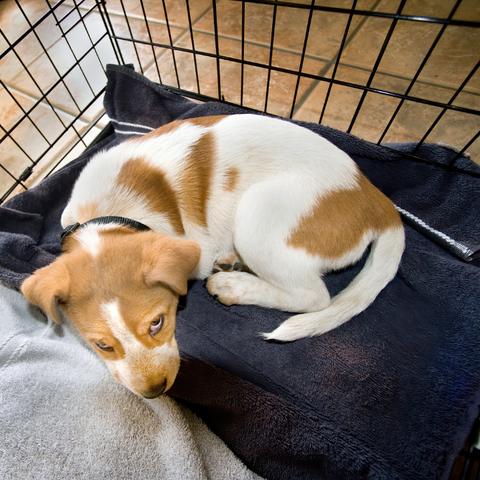
Dog crate: How to use it properly
Share
A dog crate is any space - usually a large cage - where we can confine the animal. The word crate may sound harsh, but in reality the crate can work very positively for our dog, make it feel safe and eventually become its favorite place.
But how will this be done? Careful steps are needed in familiarizing the dog with the crate and most importantly: We need to know why we are using it and what we will expect from the dog's stay in it.
So let's see below what you need to know about the correct use of the dog crate and how to make your dog love it.
Why should I use a crate for my dog?
Using the crate is all about training the dog, but under no circumstances should it be used as a means of punishment! The goal is for the dog to have a place where he feels safe and enters of his own free will.
The crate can be used to:
- Teach the dog to stay in a confined space and calm down, without causing damage to the house.
- Train him in his toilet, since dogs do not soil their area, so inside the crate he will learn to discipline himself in this area.
- The dog comes in when he is scared or stressed (eg if there are a lot of people at home).
- He stays there without making many moves in case he is injured.
- Slowly get used to a new environment without getting too stressed.

What not to do with the crate
Getting the dog used to the crate takes time and patience. At the initial stage, you should not make certain moves that will surely lead to disaster. Such moves are:
- Put the dog in the crate as punishment for something he did.
- Force him in.
- Leave the dog in the crate and leave the house.
Dogs with separation anxiety in particular will get very stressed with the crate, so it's best to avoid it.

How to teach your dog to crate
It is very important to associate the crate with something positive in the dog's mind. After all, the goal is to make it the place he will love and go to relax.
Therefore, you should fill the crate with the dog's favorite items , such as his pillow or blanket, as well as plenty of toys to keep him occupied.
First, give him time to explore this large cage in conjunction with a positive stimulus. For example, you can put his food next to him or give him a treat.
Next step is to put the food or treat inside the crate so that the dog will go inside voluntarily . If he feels bad when he comes in, don't push him. In general, in the beginning you should give the dog complete freedom to get out of the crate whenever he wants. Therefore, closing the door should be done in a later phase and only when the dog is completely calm.
After you manage to leave your puppy in the crate with the door closed, do not overdo it with the time. A few minutes is fine to start with and gradually you can increase the length of time you stay.
What is certain is that you will be able to leave your dog in the crate and leave the house, when it has become a routine for him to stay there and he is not stressed at all. That way, he will also know that this is a place where he calms down, having his food and lots of toys.
See here Petastero 's large collection of dog crates for all sizes and breeds at very low prices.




